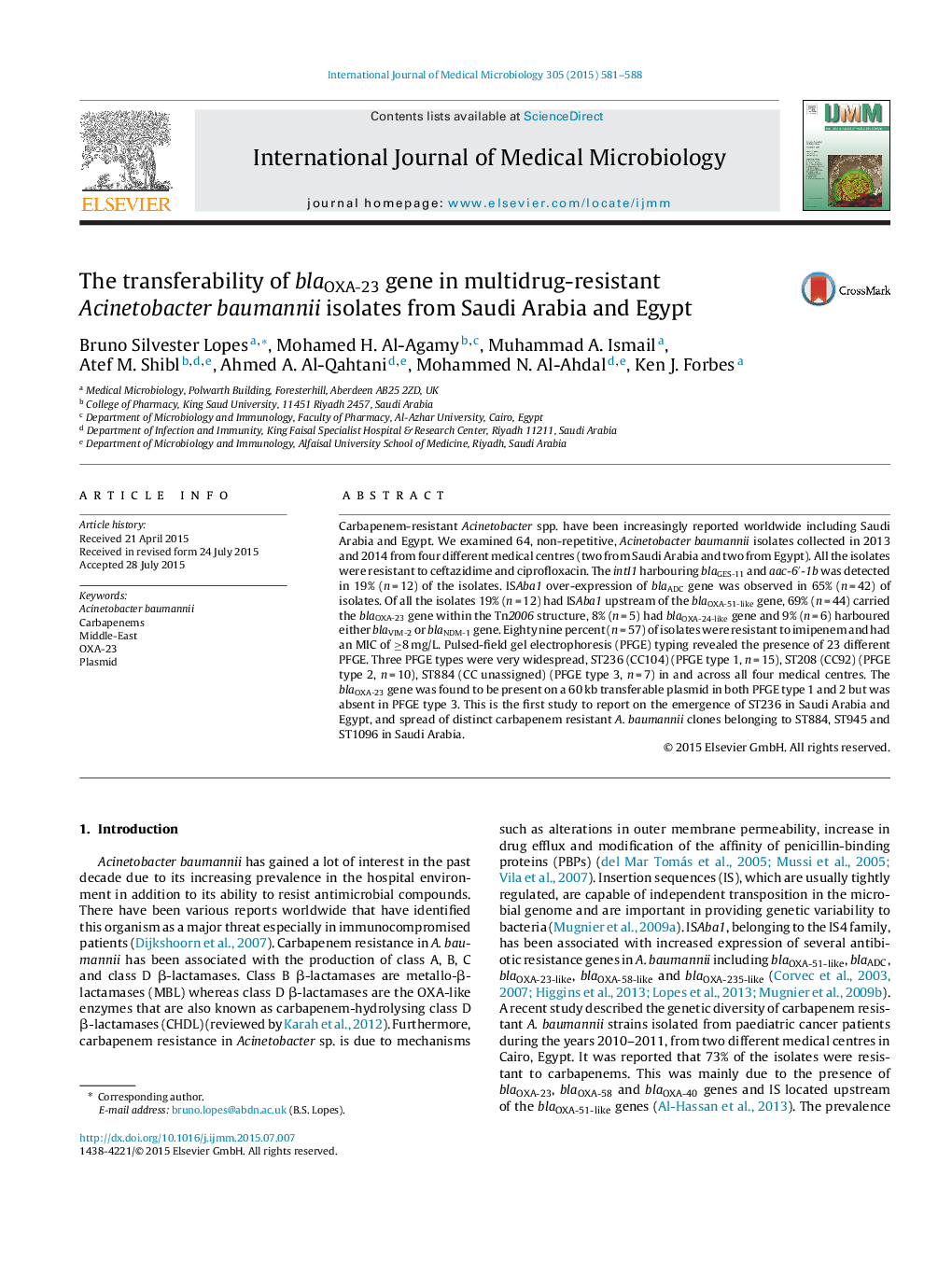| Article ID | Journal | Published Year | Pages | File Type |
|---|---|---|---|---|
| 2053845 | International Journal of Medical Microbiology | 2015 | 8 Pages |
Carbapenem-resistant Acinetobacter spp. have been increasingly reported worldwide including Saudi Arabia and Egypt. We examined 64, non-repetitive, Acinetobacter baumannii isolates collected in 2013 and 2014 from four different medical centres (two from Saudi Arabia and two from Egypt). All the isolates were resistant to ceftazidime and ciprofloxacin. The intI1 harbouring blaGES-11 and aac-6′-1b was detected in 19% (n = 12) of the isolates. ISAba1 over-expression of blaADC gene was observed in 65% (n = 42) of isolates. Of all the isolates 19% (n = 12) had ISAba1 upstream of the blaOXA-51-like gene, 69% (n = 44) carried the blaOXA-23 gene within the Tn2006 structure, 8% (n = 5) had blaOXA-24-like gene and 9% (n = 6) harboured either blaVIM-2 or blaNDM-1 gene. Eighty nine percent (n = 57) of isolates were resistant to imipenem and had an MIC of ≥8 mg/L. Pulsed-field gel electrophoresis (PFGE) typing revealed the presence of 23 different PFGE. Three PFGE types were very widespread, ST236 (CC104) (PFGE type 1, n = 15), ST208 (CC92) (PFGE type 2, n = 10), ST884 (CC unassigned) (PFGE type 3, n = 7) in and across all four medical centres. The blaOXA-23 gene was found to be present on a 60 kb transferable plasmid in both PFGE type 1 and 2 but was absent in PFGE type 3. This is the first study to report on the emergence of ST236 in Saudi Arabia and Egypt, and spread of distinct carbapenem resistant A. baumannii clones belonging to ST884, ST945 and ST1096 in Saudi Arabia.
